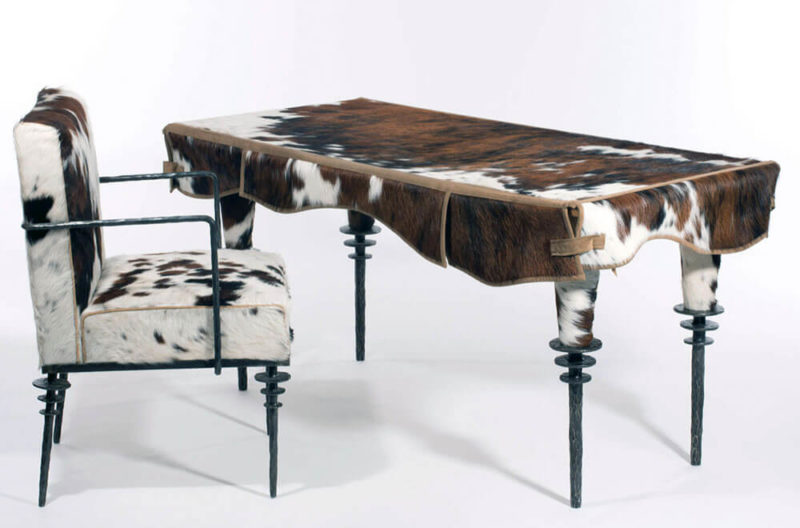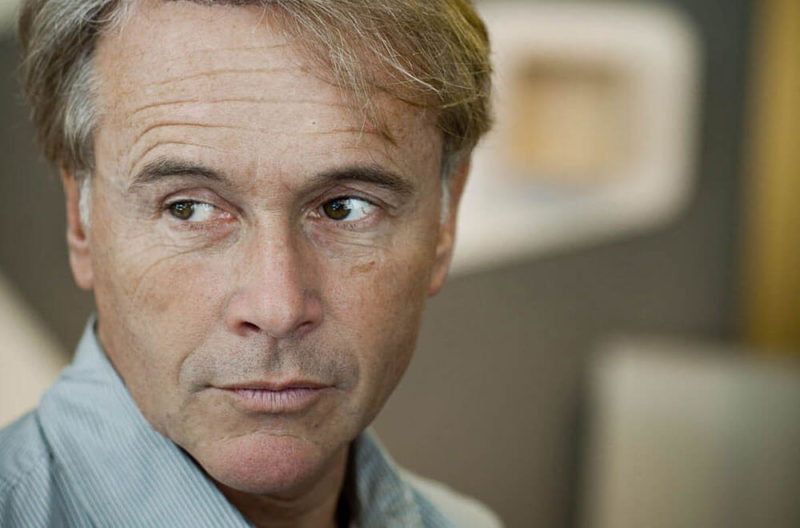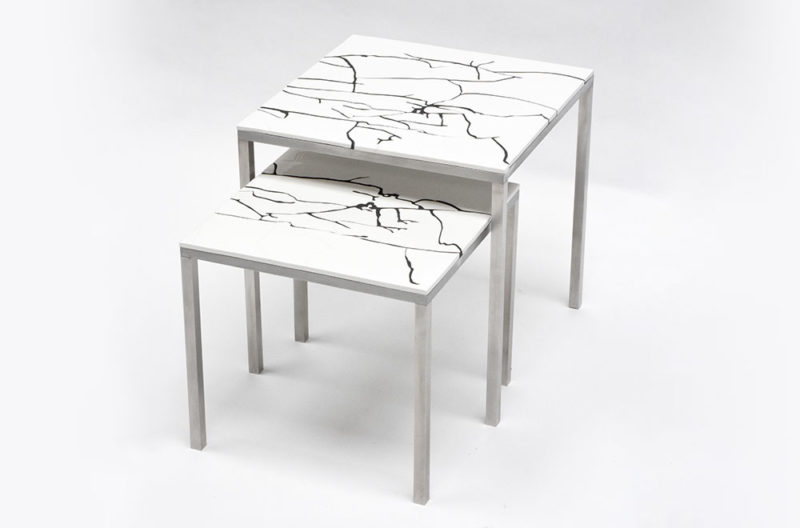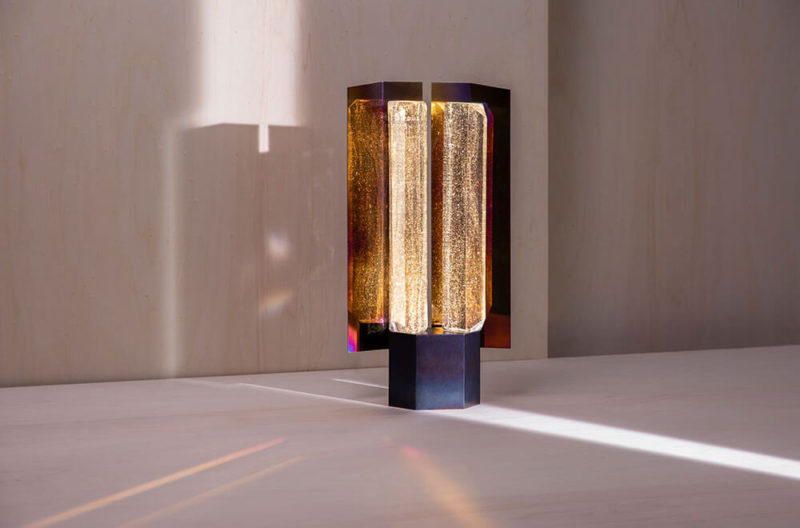Just think about it
An exhibition exploring the legacy of Néotù, whilst pairing design with contemporary painting.
Mouvement Modernes, 16 rue Minimes, 75003 Paris
1st – 22nd June 2021
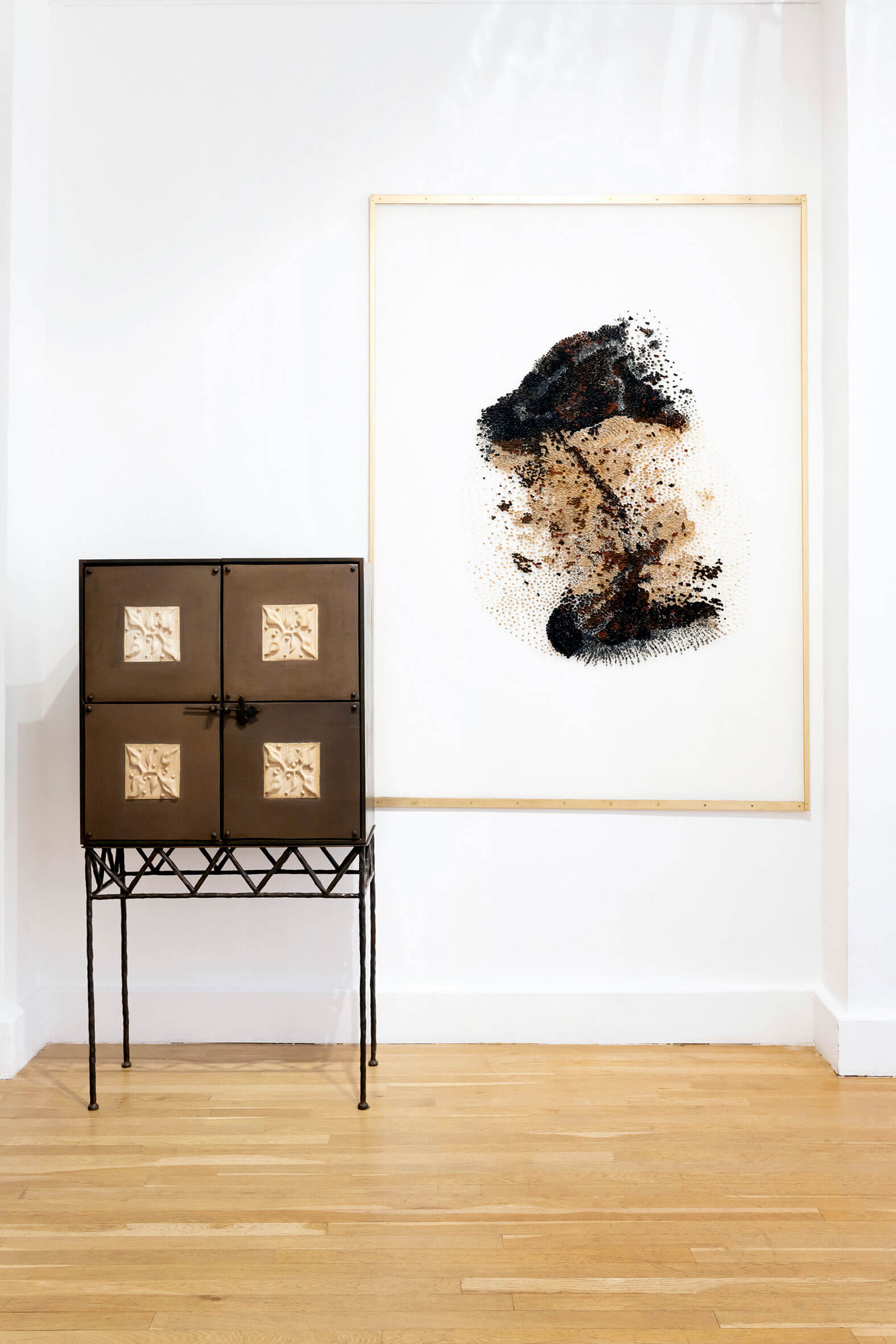
Garouste & Bonetti, ‘Selinonte Cabinet’, Néotù edition, 1991; Daniela Busarello, ‘Utero-mae’, 2020
COURTESY: Mouvements Modernes
THE PSYCHOLOGICAL RELATIONSHIP between furniture and paintings is explored in the exhibition, ‘Just think about it’, at Mouvements Modernes in Paris. The exhibition has been put together by gallery owner Sophie Mainier-Jullerot in tribute to her former boss, Pierre Staudenmeyer.
Before launching Mouvements Modernes, Staudenmeyer co-founded the groundbreaking Néotù – the first gallery in France to produce limited-edition design by Martin Szekely and Elisabeth Garouste and Mattia Bonetti, among others, in the early 1980s. After Staudenmeyer died in 2007, Mainier-Jullerot took over Mouvements Modernes and acquired part of the inventory of Néotù, which had closed in 2001.
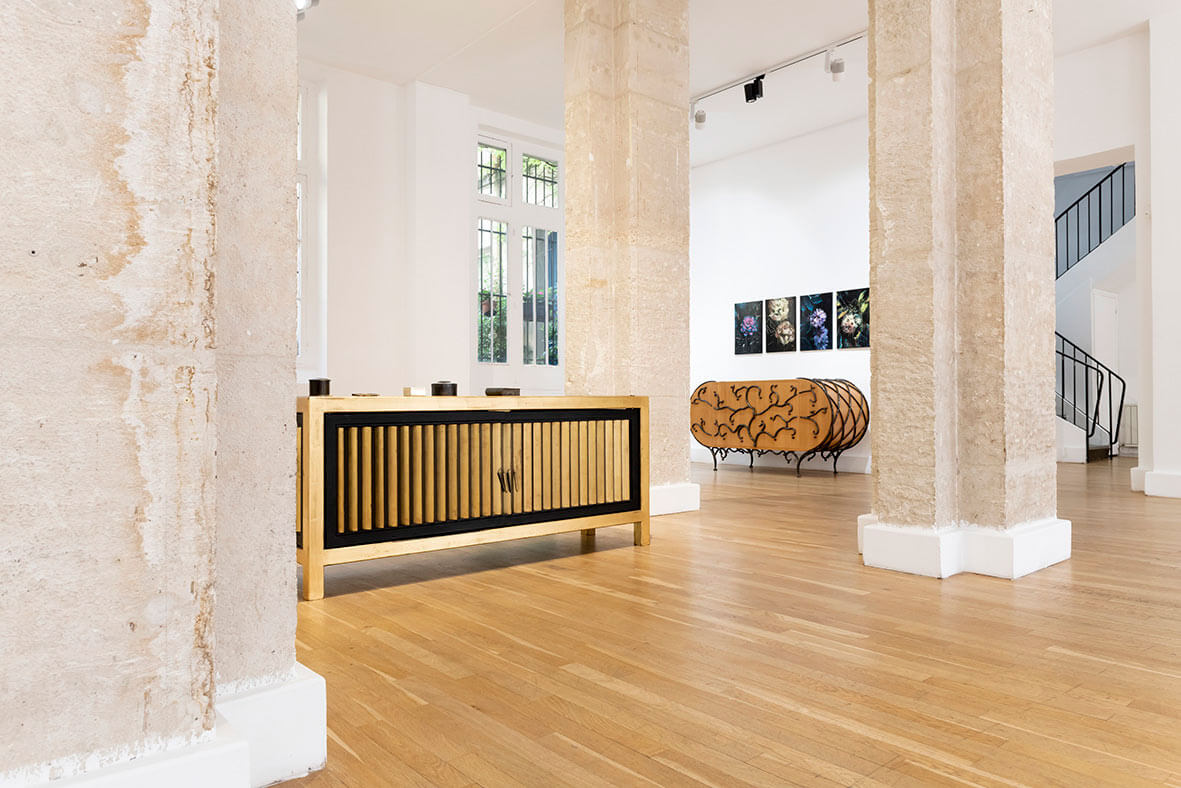
Installation view with (foreground) Garouste & Bonetti, ‘Jalousie’ sideboard, Néotù edition, 1997; (background) Garouste & Bonetti, ‘Belgravia’ chest of drawers, Néotù edition, 1989
COURTESY: Mouvements Modernes
Néotù was a pun on ‘neo’ and ‘tout’ (French for ‘everything’), as the gallery’s guiding principle was to eschew any particular style and embrace heterogeneity. The choice of works was cerebrally driven. Staudenmeyer would live with an object for a couple of weeks at home to analyse it, before deciding to exhibit it.
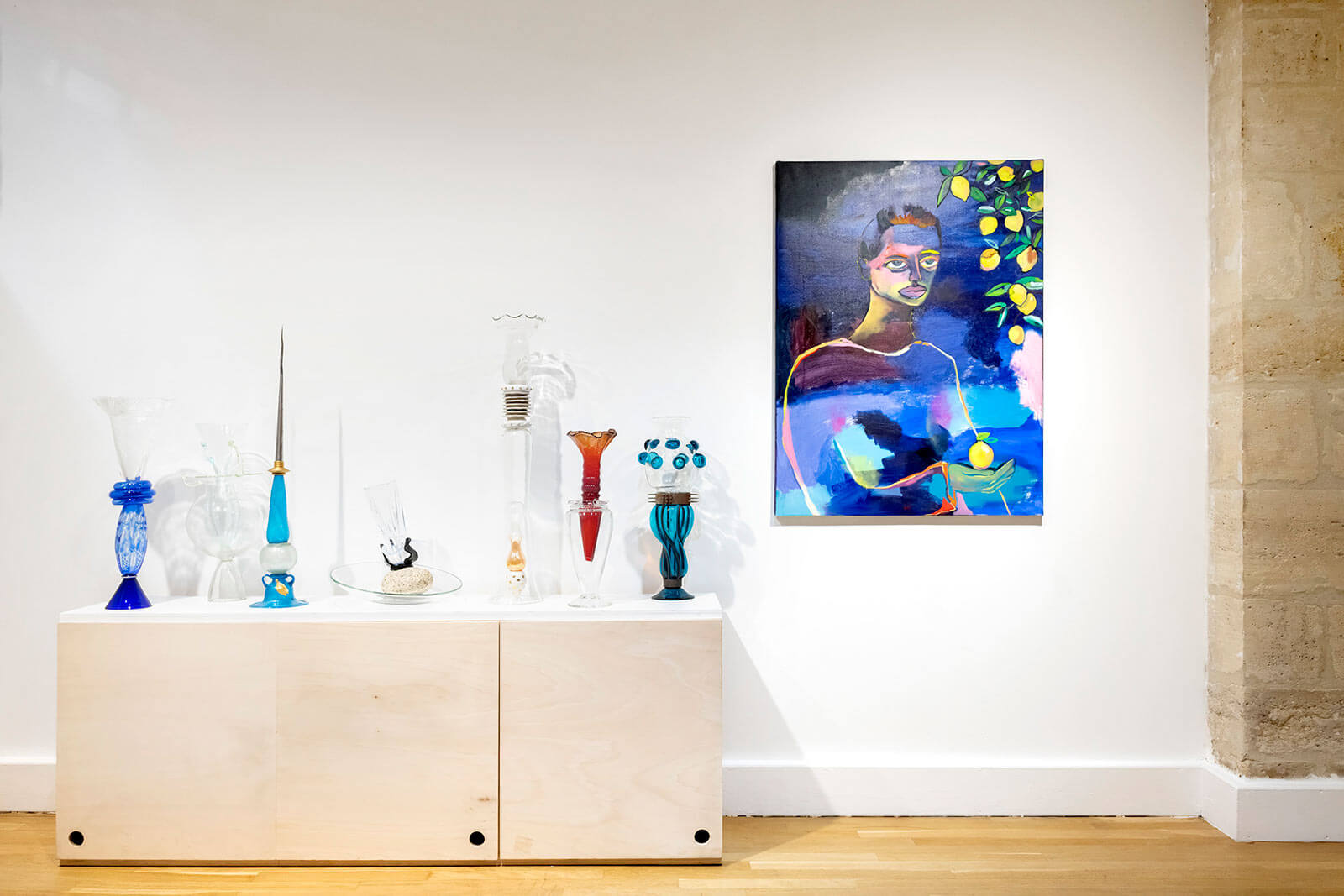
Borek Sipek, ‘Set of 7 vases’, 1988; Alice Grenier Nebout, ‘L’Homme au citron’, 2020
COURTESY: Mouvements Modernes
It is this open-minded and analytical spirit that Mainier-Jullerot has sought to revive in ‘Just think about it’. However, her approach is quite different. She has striven to “stimulate reflection” by pairing design pieces produced by Néotù in the 1980s-1990s with paintings by upcoming artists that she has discovered.
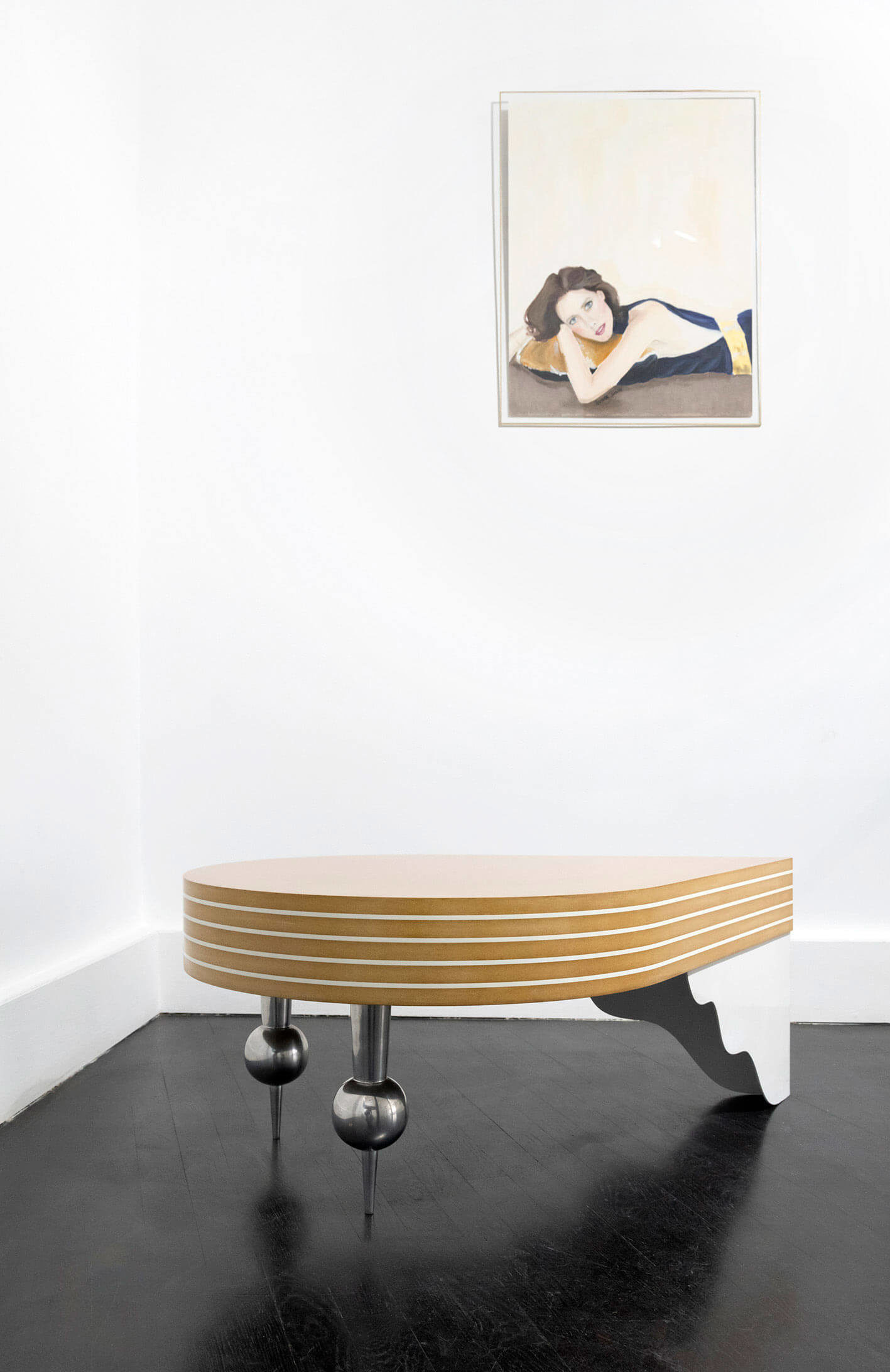
Dan Friedman, ‘Neotable’, 1990; Vanessa Seward, ‘Blue Sylvia’, 2020
COURTESY: Mouvements Modernes
“I thought it’d be interesting to present Néotù furniture in association with contemporary creations in order to enter Pierre’s vision of mingling things and genres to tell stories,” Mainier-Jullerot says. “Perhaps I’ve made choices that he wouldn’t have made, because I have my own personality. But my way of working is similar to his, with the same sense of freedom – and I also like surprising the public in unexpected ways.”
Mainier-Jullerot matched the paintings and design pieces, many of which are by Garouste and Bonetti, according to palettes and resonances. Above the duo’s organically shaped, dark red velvet ‘Maharajah Sofa’ (1991) are Vanessa Seward’s portraits of women languishing on a scarlet sofa and armchair.
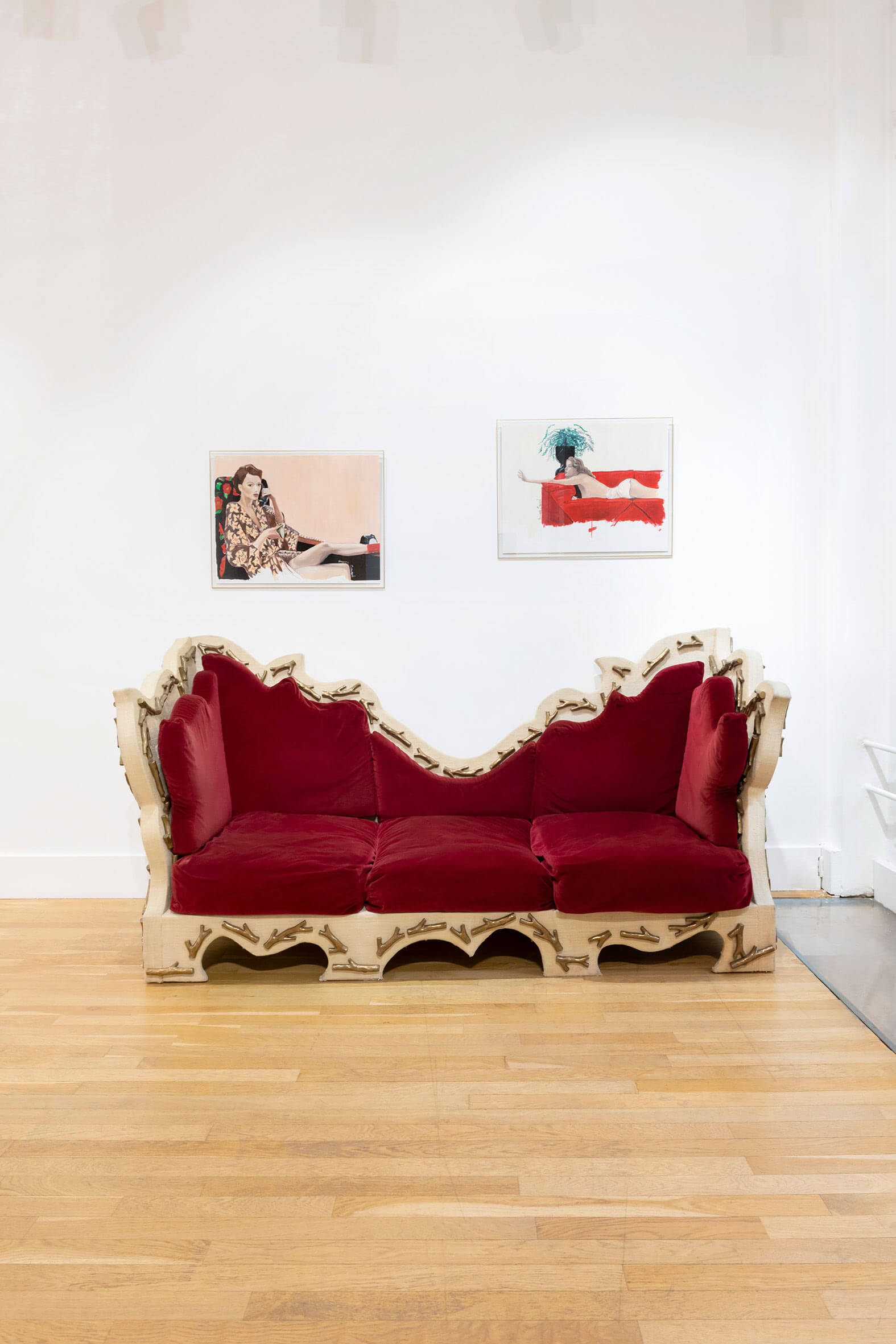
Garouste & Bonetti, ‘Maharajah Sofa’, Néotù edition, 1991; Vanessa Seward, ‘November Girl’, 1969
COURTESY: Mouvements Modernes
The links are immediately apparent, such as Garouste and Bonetti’s wood-and-raffia stool from 1985 with Alice Grenier Nebout’s blue-toned forest scene of horse riders. Or, Pucci de Rossi’s 1988 pale grey desk ensemble with Daniela Busarello’s neutrally toned abstract painting.
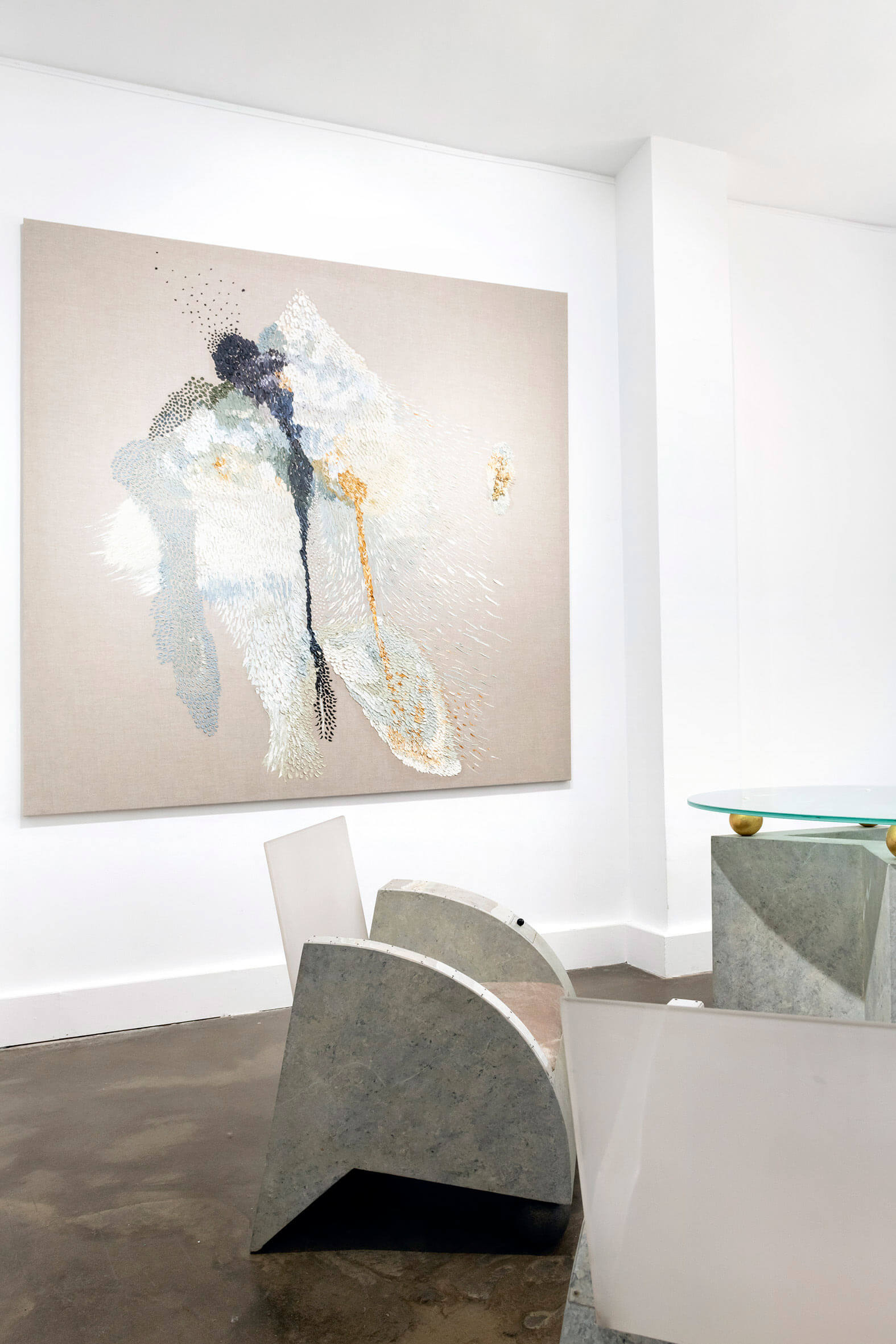
Pucci de Rossi, ‘Desk and its three armchairs’, 1988; Daniella Busarello, ‘IL.XII 03.2018’, 2018
COURTESY: Mouvements Modernes
Mainier-Jullerot also combined pieces according to visual language. Szekely’s graphic ‘Pi’ low table (1984), its sheets of steel slanting to the ground, is teamed with Seward’s portrait of a woman with her knee at a right angle to her body – both pieces emphasise angularity.
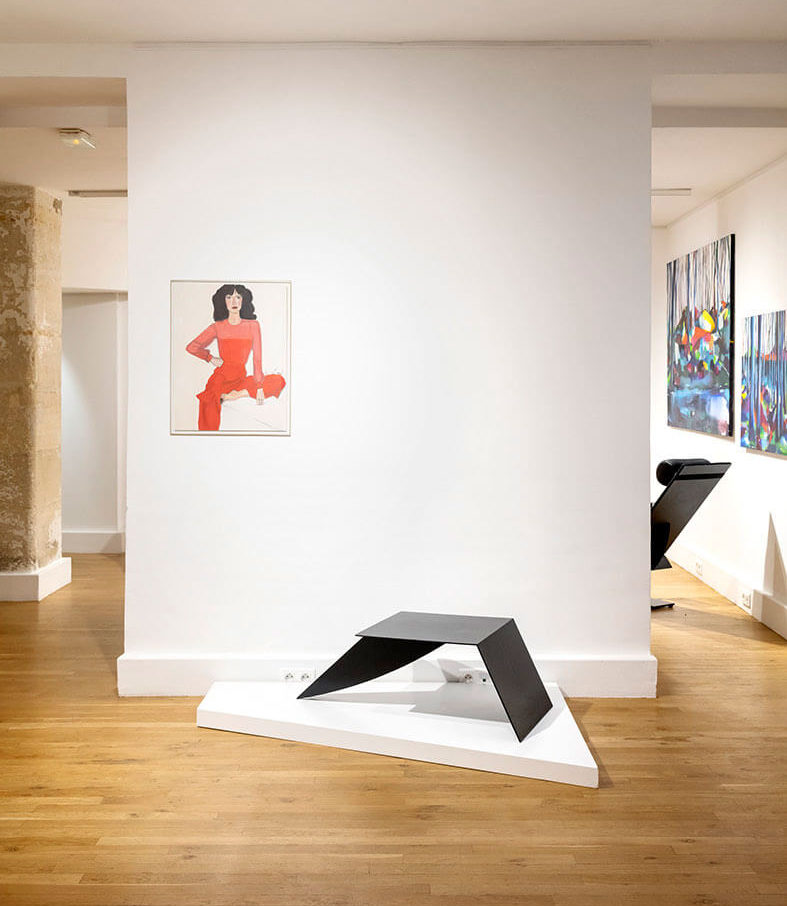
Martin Szekely, ‘Pi’ coffee table, Néotù edition, 1984; Vanessa Seward, ‘Sylvia in Red’, 2020
COURTESY: Mouvements Modernes
Indeed, Szekely’s works lie at the origin of the Néotù story. Staudenmeyer discovered Szekely through VIA, an association launched by the French state in 1979 to research and promote innovation in contemporary creation and furniture. It was at VIA that Staudenmeyer spotted the prototype of the ‘Pi’ chaise longue which Szekely had conceived after VIA offering him a carte blanche. The Centre Pompidou acquired the prototype and had a monographic exhibition of Szekely’s work in 2011.
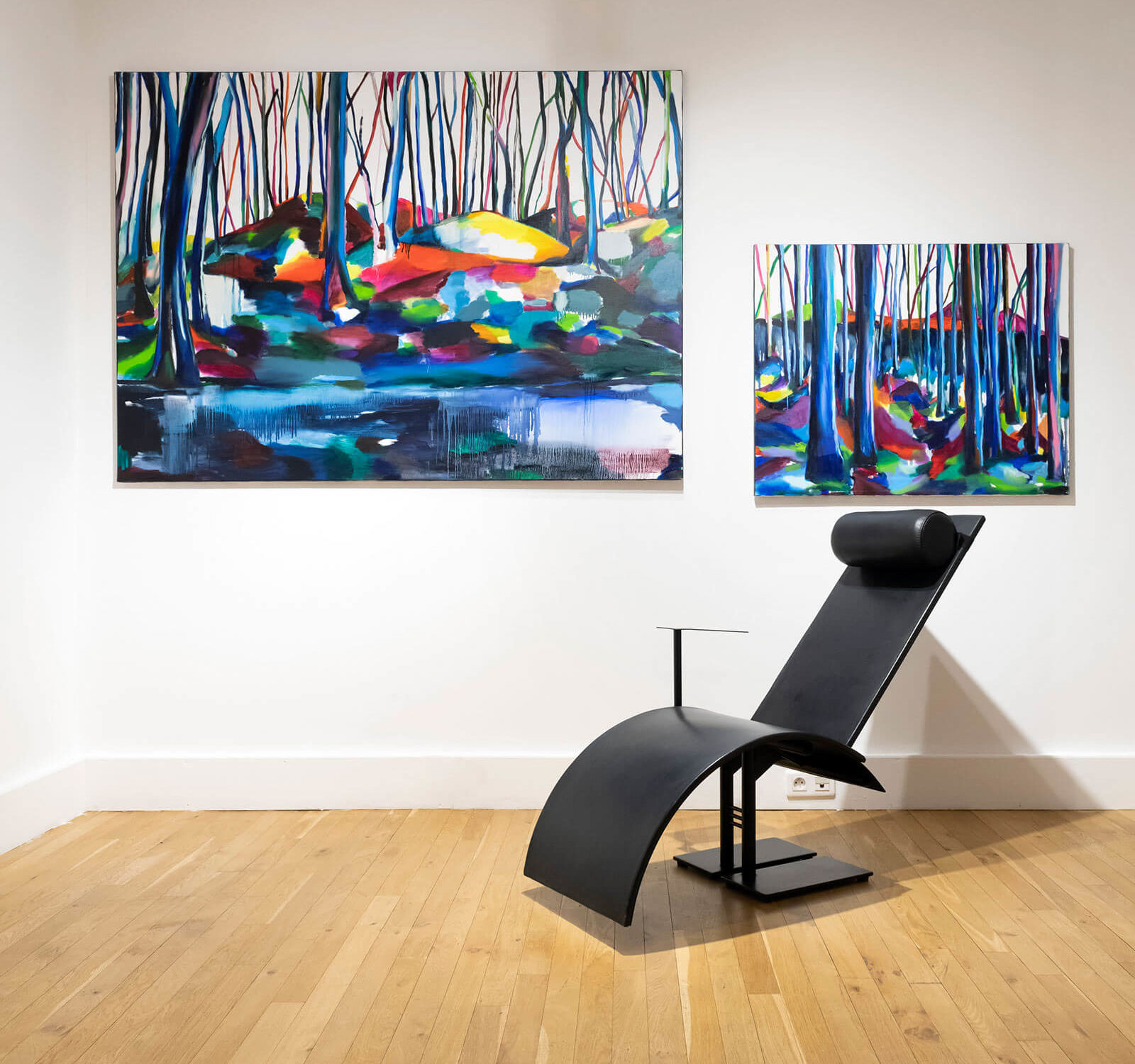
Martin Szekely, ‘Pi’ chaise longue, Néotù edition, 1983; Alice Grenier Nebout, ‘Fôret de jour’ and ‘Fôret de coeur’, 2021
COURTESY: Mouvements Modernes
“This is where the idea to launch a gallery that edited design came from, as Pierre realised that there was no place where this kind of creator could be distributed,” Mainier-Jullerot explains. Staudenmeyer, who had worked for antiques dealer Yves Mikaeloff, set up Néotù with Gérard Dalmon and in 1983 Néotù produced Szekely’s ensuing ‘Pi’ collection.
Initially situated in the antique dealers’ district on the left bank, in 1985 Néotù relocated near the Centre Pompidou to champion contemporary creativity. The pioneering concept of producing limited-edition pieces became renowned beyond Paris.
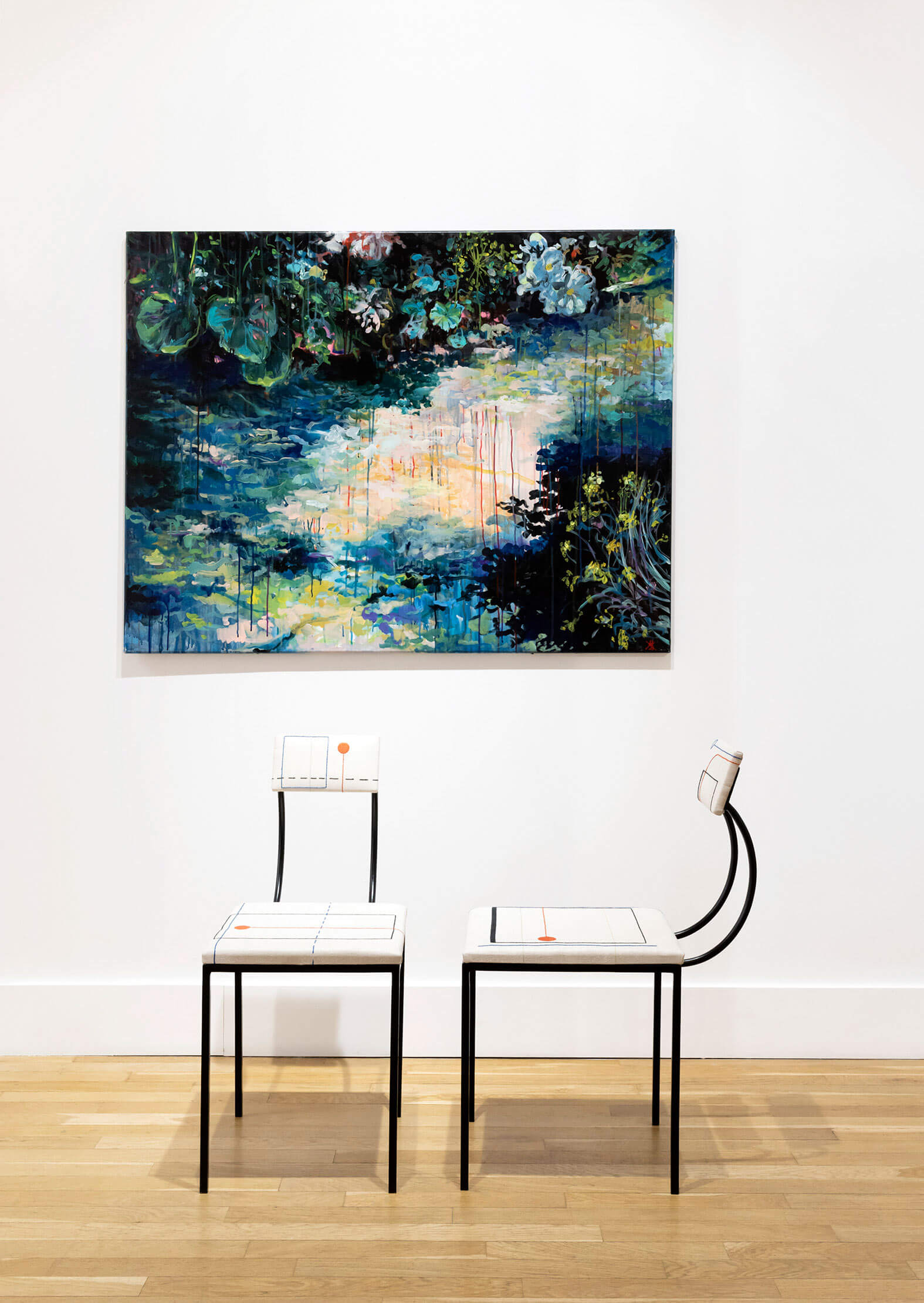
Pierre Staudenmeyer and Julio Villani, ‘Kolton Chairs’, 1988; Yannick Bernede, ‘Que le souffle demeure’, 2019
COURTESY: Mouvements Modernes
“I can’t think of any other design gallery in the 1980s, while today there are many,” says Jasper Morrison, who participated in Néotù’s exhibition, ‘English Eccentrics’, in 1986 with Ron Arad and Tom Dixon, and subsequently had two solo shows. “Pierre certainly had a good eye and in some ways was far ahead of his time. He wasn’t very good at writing cheques, though. Whenever I found myself in Paris, I’d visit him to ask him to pay up!”
Néotù also spotlighted luminaries like Andrea Branzi and early pieces by the Bouroullec brothers. In the early 1990s, it inaugurated a space in New York which Dalmon ran for a few years. But in 2001, Néotù closed its doors due to rising production costs. Staudenmeyer and Dalmon parted ways, and the following year Staudenmeyer inaugurated Mouvements Modernes.
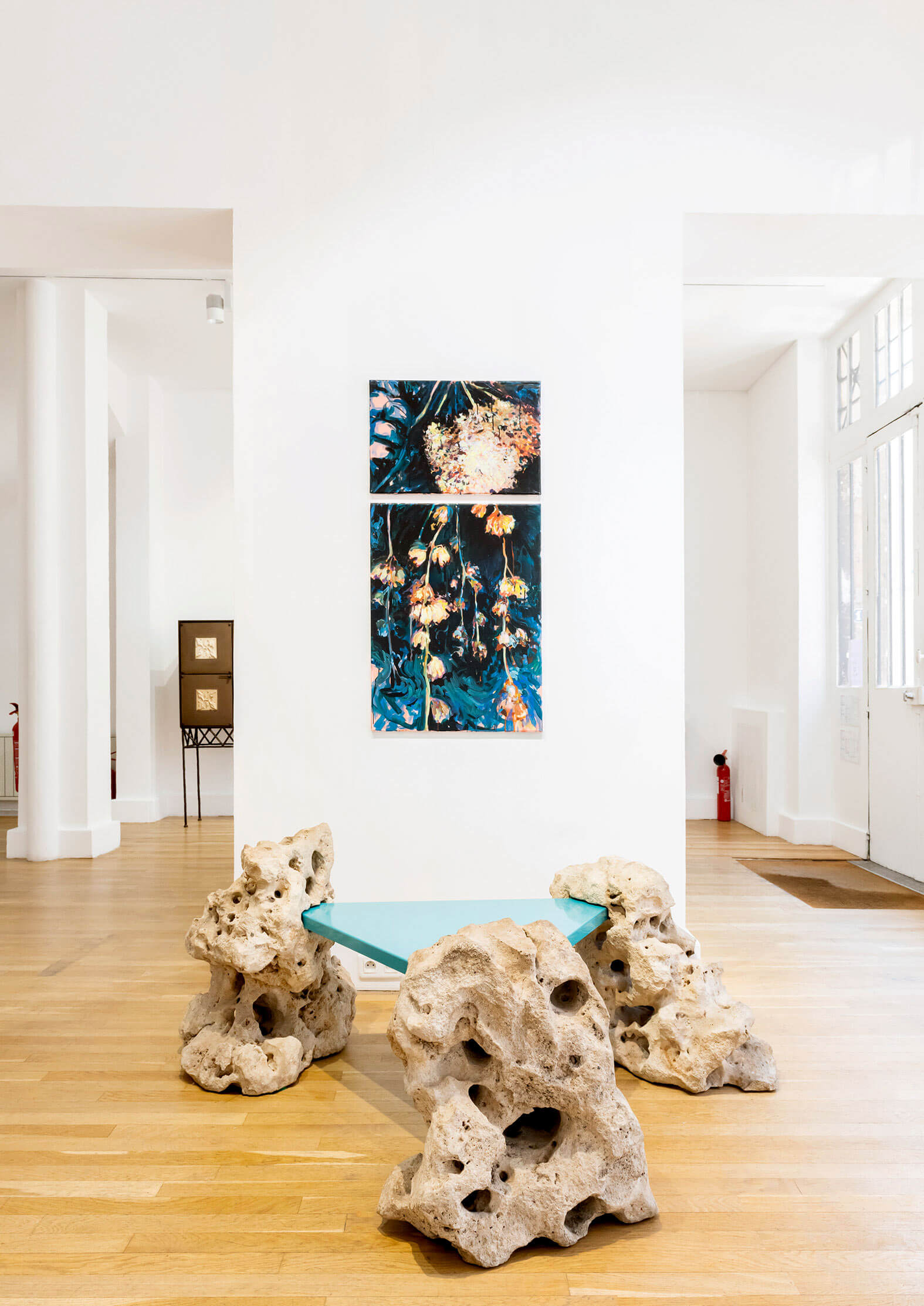
Garouste & Bonetti, ‘Rocher’ coffee table, Néotù edition, 1982; Yannick Bernede, ‘Le Refuge 1’, 2020
COURTESY: Mouvements Modernes
Staudenmeyer’s vision for Mouvements Modernes differed greatly. The gallery would present an eclectic, multi-disciplinary offering from French ceramics to international design and photography but was not involved in production. It was when Staudenmeyer was running Mouvements Modernes that Mainier-Jullerot joined him.
‘Just think about it’ underscores this transversality of Mouvements Modernes as well as recalling the dedication to producing limited-edition design that defined Néotù.
‘Just think about it’ at Mouvement Modernes.




